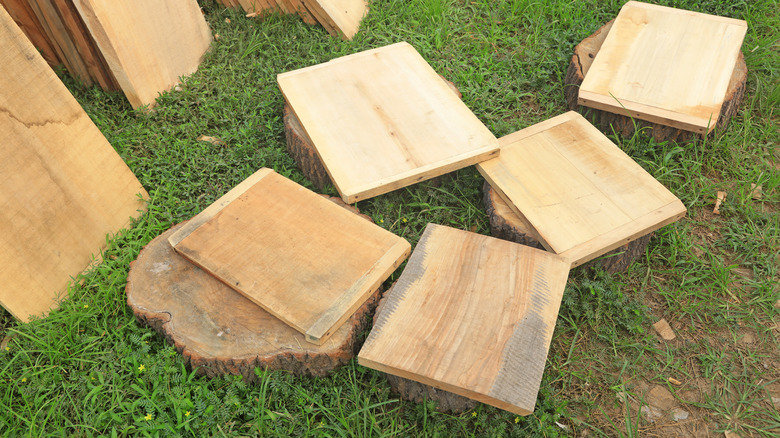Why You Should Rethink Making Your Raised Garden Bed Out Of Wood
Wood may seem like a natural choice for raised garden beds, but it often breaks down faster than expected. Moisture and soil microbes gradually cause untreated lumber to rot, especially in areas with high rainfall or humidity. Even rot-resistant woods like cedar don't last forever. Many gardeners find themselves replacing boards after just six to ten years. Constant exposure to rain, direct sunlight, and soil contact leads to warping, cracking, and decay, which weakens the structure over time.
Insects can speed up the damage. Termites and carpenter ants are drawn to damp wood and can chew through boards from the inside out. Before long, what looked like a solid raised garden bed turns into a maintenance loop of sealing, reinforcing, and rebuilding. The time and money spent trying to keep a wooden bed standing often cancel out any savings at the start and leave gardeners frustrated with constant repairs and replacements.
Treated wood solves one problem but may create others
Using pressure-treated wood can make a garden bed last longer, but it also raises serious health and environmental concerns. Older versions, like chromated copper arsenate, were banned for residential use by the EPA in 2002 due to the risk of arsenic leaching into the soil. Preservatives can migrate from the wood into nearby soil and plant roots. The reassuring news is that studies have found very low levels of metal uptake in vegetables, typically well below thresholds considered harmful.
Still, a low risk doesn't mean no risk. Gardeners can be exposed to these chemicals by touching the treated wood or contaminated soil, especially through bare hands or inhaling particles during digging. This kind of exposure is a more direct concern than eating the plants themselves. That's why organic growing standards prohibit treated lumber in soil used for food crops. One way to reduce the chance of chemicals seeping into the soil is by lining the inside of the bed with thick plastic. This creates a barrier between the wood and the growing space. You can also add a top layer of untreated boards to create a clean sitting surface and avoid direct contact with treated wood. However, if you are still set on using wood, choose the best wood for outdoor projects, like cedar or redwood, to avoid chemical treatments.
Wooden beds can attract pests and fungal diseases over time
Beyond decay and chemical concerns, wooden raised beds can also create the perfect conditions for pests and diseases. Termites are one of the biggest concerns. These insects feed on wood and other plant materials and are known to chew through roots, tree bark, and even the interiors of fruit trees. If they infest a wooden raised bed, they won't stop there. They can move from the bed into the surrounding soil or structures, making it much harder to get rid of termites once they've settled in.
Moreover, these wood-damaging pests are already drawn to decaying wood. Gardeners who fill their beds with logs or compost containing chunks of wood may create even more ideal conditions for them. It's a common practice to reduce the amount of soil needed in deep beds, but if termites are attracted to that material, it's reasonable to assume they'll also find the surrounding wooden frame just as appealing.
Fungal growth is another issue that comes with moist, untreated wood. Excess moisture in wooden beds creates a suitable environment for fungi that break down wood to grow and spread. Over time, wooden beds can also provide shelter for unwanted pests like slugs and earwigs. These pests thrive in dark, damp crevices and may hide beneath the wooden edges, especially if the structure is aging or beginning to rot. For gardeners, this means more maintenance and a higher risk of pest-related plant damage.


